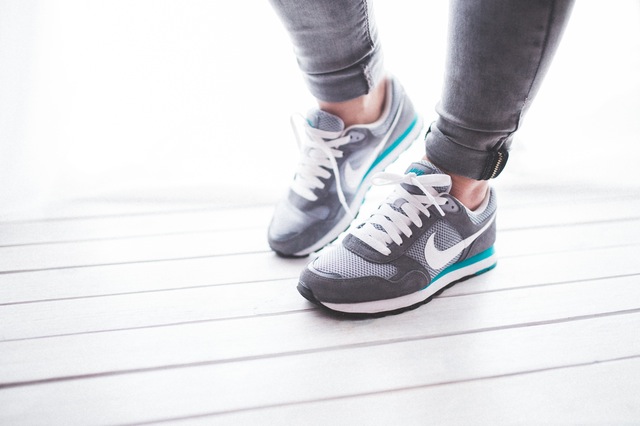By Bryan Alger on May 16, 2016
So I was adding weight onto the bar to do a heavy triple on Squat, my heaviest set that day. It had been a while since I worked out with a friend, and I was now squatting about thirty pounds more than the last time I did a real form check, so I grabbed the nearest jacked person I saw and asked him to watch my lift and provide feedback. I'm pretty satisfied with my form overall, but there are some things that are hard to notice with a lot of weight on your back that I wanted a second opinion on. Namely, a depth checkup, how far forward are my knees moving, and am I driving up with my heels or overusing my back for leverage?

Ditch your cutesy little trainers next time you head to the gym.
Well, I got some great advice and words of encouragement from my friend as well as an unexpected tip: stop squatting in running shoes! Of course I knew weightlifting shoes were a thing, I've just never bothered to use them until recently. I previously associated them with the more serious lifters, guys and gals that are competing, overkill for a casual lifter like myself. Boy, was I wrong!
First of all, running shoes are meant to absorb shock and impact, their goal is to provide comfort and flexibility. That's great if you're on a trail or running around your neighborhood where you need the strike protection that allows you to continue running for miles. That same protection is a detriment when you're loading lots of weight on your heels either during heavy squats, overheard movements or even pulling exercises like the deadlift. In the weightlifting scenario, the squishy sole of your running shoes takes away feeling during your lift and does not provide the stable platform you need to drive force to the ground through your heels.
On the contrary, shoes designed for weightlifting provide a solid platform that transfer energy much better than running shoes and also add stability and support for your foot. Another benefit is that you can purchase your shoe with the right amount of heel rise for your body. A person with really tight hamstrings will probably find that they can maintain better form performing heavy squats with a taller rise than someone else.
In the case above, my form checkup was primarily good, but my friend noticed that I lean forward at the bottom of the squat position as I'm about to drive the weight up. For me, lifting shoes have helped to correct this problem by giving me that stable platform to drive out of the hole with my heels and also adding a slight rise that works around some tight hamstring issues I experience at the bottom of the movement.
So if you're still lifting in running shoes, do yourself a favor and pick up a pair of shoes designed for your sport!
Bryan is the Co-Founder of Gravitus and also a Marine Corps veteran and seasoned engineer. The only thing Bryan likes more than hacking code is pumping iron.

